
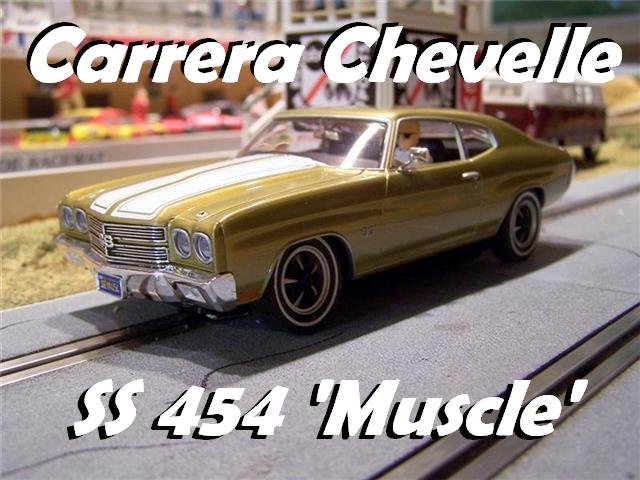 Carrera Chevelle SS 454 Review By David Reinecke So, when Carrera announced in late 2008 that a 1970 Chevelle was coming this year, I promptly went out and purchased 8 sets of the vintage Stock Car wheels and tires, as I planned on converting these into Stockers. I just had to have a Jim Hurtubise Chevelle – actually, I'll need a LOT of Chevelle Stock Cars to run with my Torinos, Road Runners, Daytonas, and Superbirds! Let me make one thing perfectly clear: I love Chevelles. Scratch that. I LOVE Chevelles! I got my first Chevelle on my first birthday in 1968. I've restored two of my own and helped on dozens of others. I can recite RPO codes in my sleep. I've founded a Chevelle Club, and run national Chevelle Car Shows. I'm very picky about them, and hoped that the Carrera offering would be very good. So, now that I've got one of the new Chevelles in my hands, let's take a look, shall we? 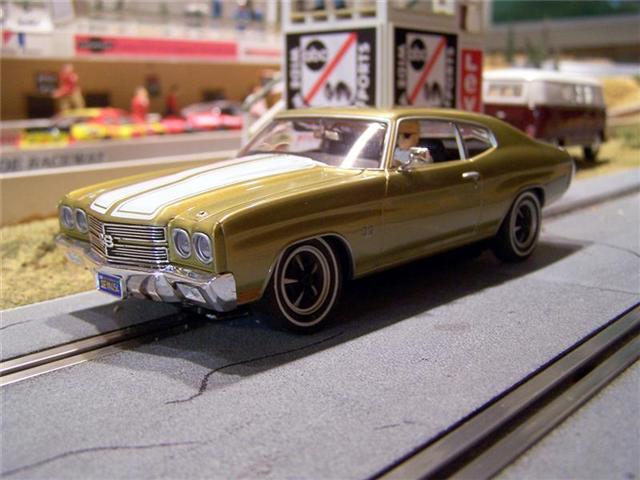 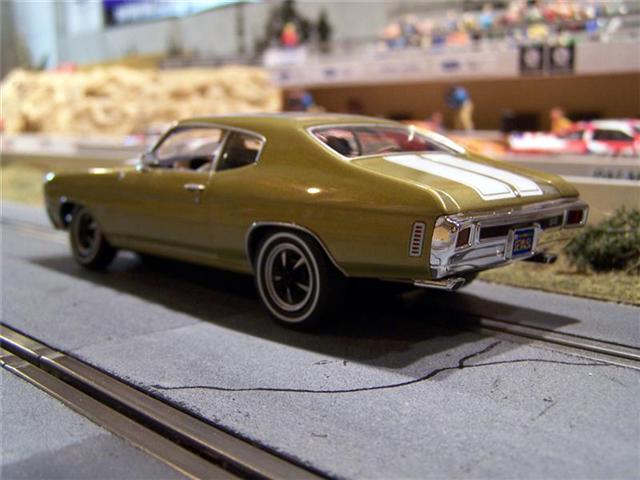 The Body is absolutely beautiful! The proportions look very nice and when viewed against a Vintage Stock Car look to be about spot on without getting out my digital calipers. The Torino was 5 inches longer than the Chevelle in real life, so this looks just about right. 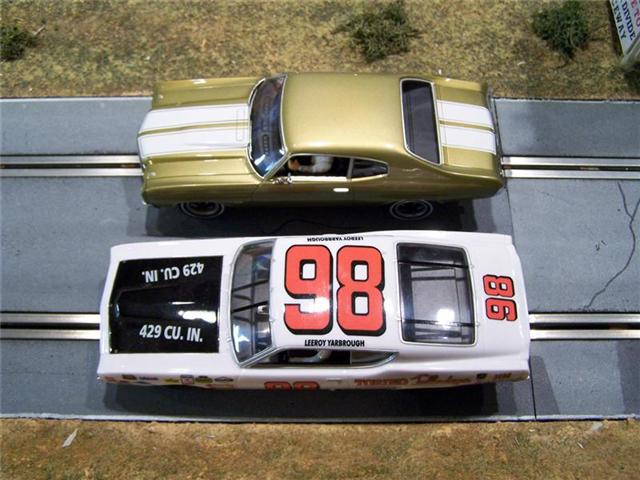 The gold body with white stripes is an actual combination offered in 1970, although, I must admit, that I can't tell if they were trying for the Desert Sand or Champagne Gold. The tampos are very sharp on the stripes, emblems and trim. I was especially impressed with the level of detail on the trunk decklid emblem. The SS rear bumper pad looks great as well, the only issue I see is that rear valance below the bumper is chrome on this model. On the 1:1 car it is painted the body color. I know why they did it - to have a single part for the rear of the car, but I would have liked to have seen them paint it anyway. The rear side marker lights should be body colored as well and not silver as shown, but I'm picking nits... In front the grille needs to be more blacked out as well, but that can be fixed with a brush and some paint if it bothers you. The Chevelle has functioning headlights as well as tail lights. The interior of the car has been painted black in these areas to minimize bleed through. The lights both front and rear are LED, with the front tinted blue in color. I'm sure that this is exciting if you are 6 years old, but to me, it looks plain silly. Blue LEDs do NOT belong on a muscle car! 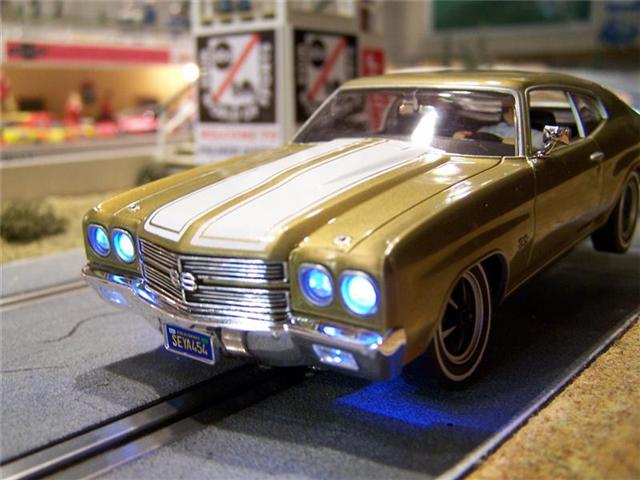 The half-interior is well detailed and actually looks like a 1970 Chevelle. I was especially impressed with the door panels and the dash. They even did a good representation of the correct console and staple-type shifter. The wheels are the two-piece ones we're beginning to see on the Carrera cars. Mine were round and fairly flash free. However, they are not the SS wheels that would be found on the Chevelle, but look like the Pontiac wheels that a Trans-Am or GTO would have had. As the Firebird was just released by Carrera, they may have felt it was close enough. The tires are whitewalls and very skinny. I have no idea why Carrera did not put a white lettered tire on the car, but this can be easily fixed by flipping them to the blackwalled side. 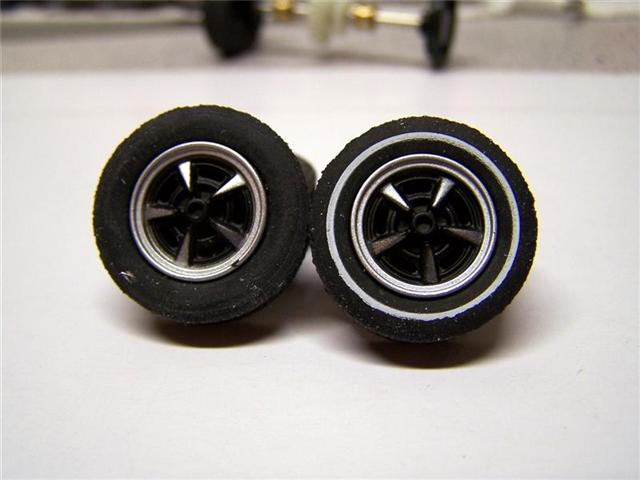 The chassis is a near-copy of the one on the 1957 Chevrolet recently released by Carrera, with a few minor exceptions, such as the magnet holder, and it is loaded with electronics for the headlights and tail lights. One nice touch here is that Carrera made it easy to remove the wiring and provides connectors to go from the guide directly to the motor in the event that you remove the lights. 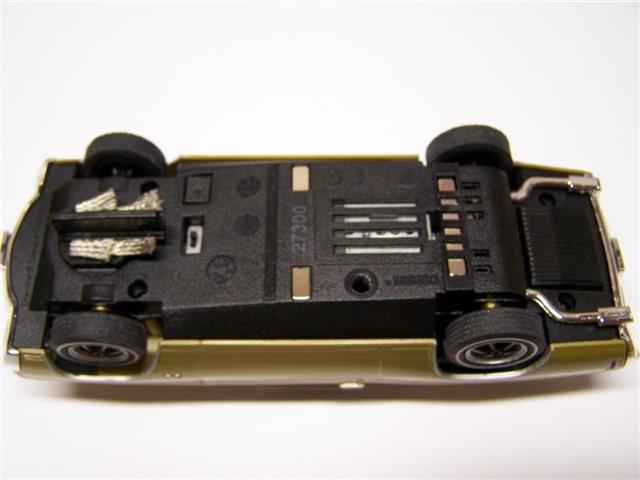 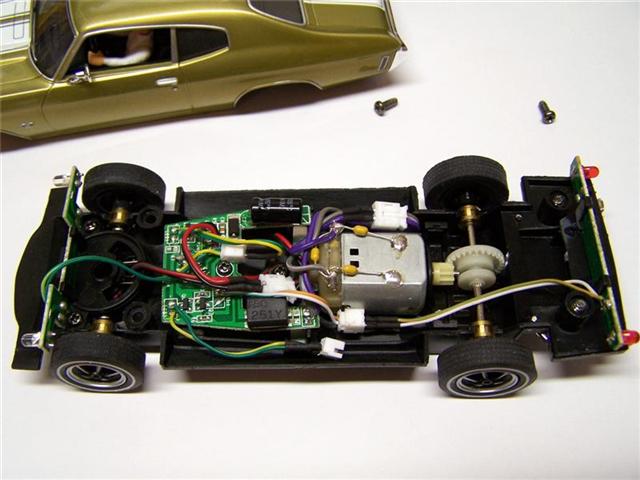 For those of us who like tuning the original Carrera Vintage Stock Cars, a number of changes have been made that make tuning this one much harder. The biggest change is the guide. The guide system is a large, round turn-table like device that the guide simply snaps into. It is very easy to change the guide as well as the braids. However, this takes up a large amount of space that requires the use of stub axles for the front wheels. Those of us familiar with tuning Fly cars usually can easily get around this issue by installing a straight axle, but not here. If you notice in the first picture, the wheels canter in at the top as if the car has bad camber settings in the alignment, and they flop a bit in their bushings. 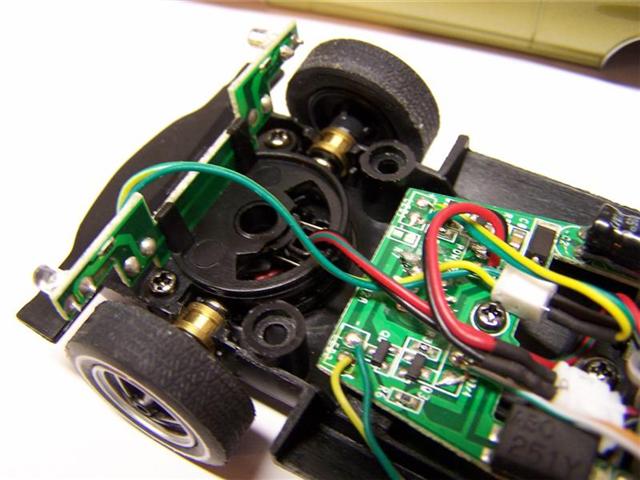 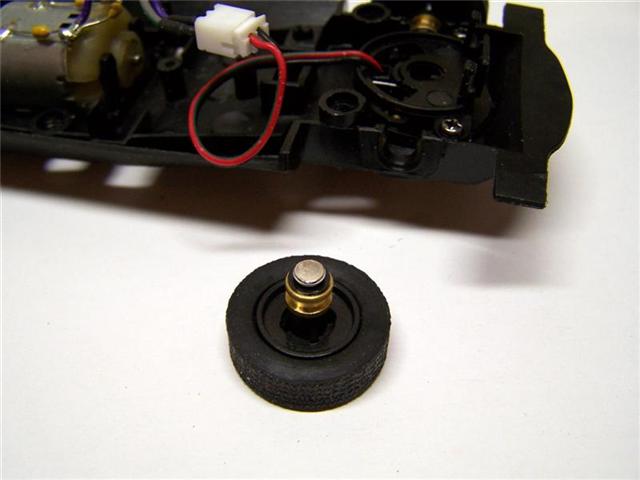 So, how does it go? I dressed the braids, placed it on the track, hit the gas and got....nothing. The car would not move. Why? The guide was stuck in my Scalextric Sport track. The guide is simply too wide to easily slip through the slot on the Scalextric track. For a company that has to know that other track systems besides theirs exist, this is simply inexcusable. To run the car in stock form, I had to setup a Carrera track and run it on the floor. Once there, it runs well and with the two huge magnets, is very stuck down. The car has no personality in this mode and was boring to drive. It was impossible for me to tail slide the car, and once it got going, it snapped out of the slot very quickly into a roll if I came in hot on the corners. I watched the wheel alignment, but with the magnets in, there was no issue in the driveability of the car. I then trimmed the guide and thinned it with a file until it could run on my Scalextric track. I observed the same driveability on this track that I did on the Carrera. After testing the car in stock form, I decided to pull the magnets to see how the car would drive, as I'm sure a number of buyers drive their cars this way or utilize routed wood tracks. This made the car impossible to drive. The front end bounced like mad and I could observe the wheels hopping badly. The culprit? The front axle stubs. The car is also extremely light in the rear end and even sanding the tires did nothing to improve it's manners. I disassembled the car to attempt to tighten the stubs, but nothing could be done to improve the issue. After my years of experience with the original Stocker chassis, this was a huge disappointment. I'd really hoped to have an equal runner for that series out of the box. In conclusion, I am happy that Carrera has offered a car that I've been wanting for long time, and one that looks fantastic, but I have to admit I'm very disappointed in the new chassis and guide system. Carrera has given us a model that runs well in stock form on Carrera track but not well on others and not at all without magnets. In my opinion they need to get this guide system fixed in order to allow others to enjoy the car. The stub axles that are required due to the guide system is a killer in this car. There is a way to resolve this, but it requires a decent amount of work, something that some folks may be uncomfortable with. I'll post another follow-on article as I get mine converted into a Stock Car and figure out how to get a straight axle into the chassis. Special thanks to David Reinecke of RMS Resins for reviewing the new Carrera Chevelle SS 454. Please stop by our HRW Forums to talk about this and all other models of slot cars. 
|